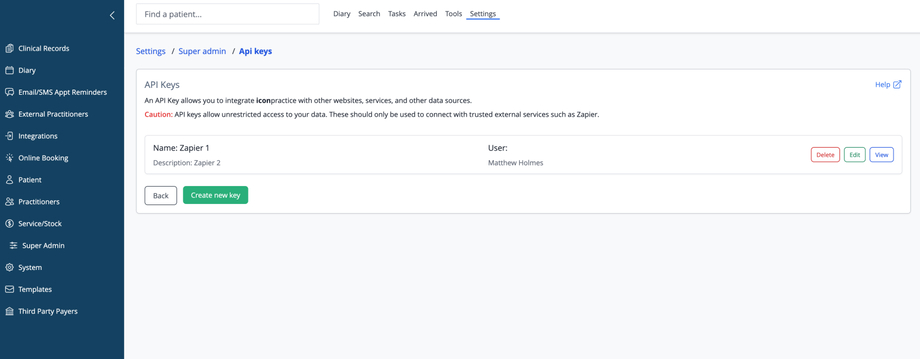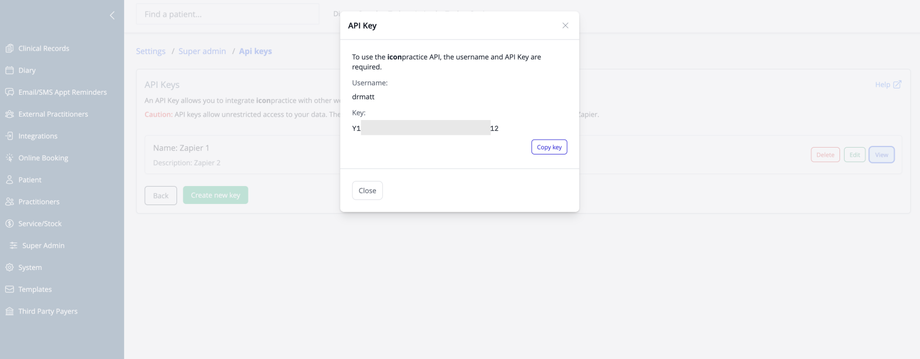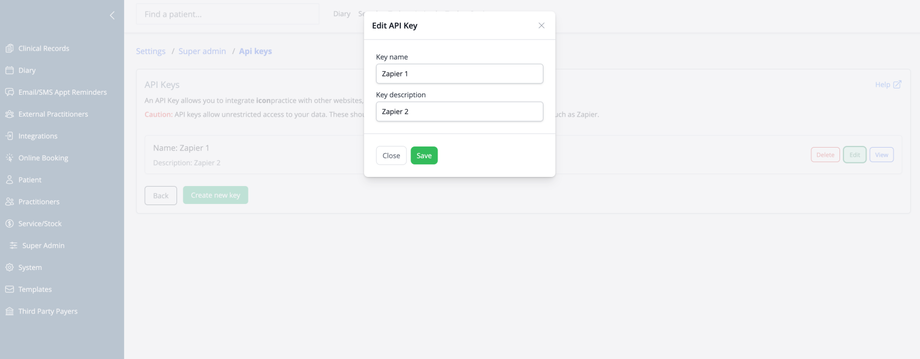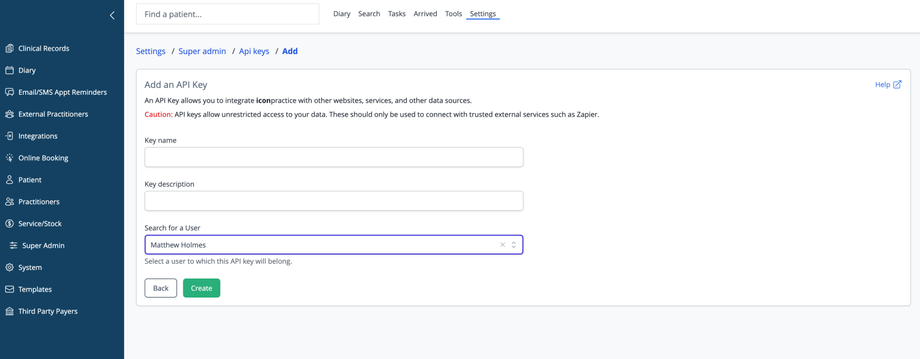Overview
The API Keys section allows administrators to create and manage API keys that enable integration between the practice management system and third-party services. API keys provide secure access for data exchange with external applications like Zapier.
Accessing API Keys
- Navigate to Settings in the top menu
- Select Super admin from the sidebar menu
- Click on API keys
Understanding API Keys
API Keys are secure authentication tokens that:
- Allow external services to connect to your practice data
- Enable automation and integration with third-party applications
- Are associated with specific users in your practice
Caution: API keys provide unrestricted access to your data. They should only be used to connect with trusted external services such as Zapier.
Managing Existing API Keys
The main API Keys screen displays all existing keys with their details:
- Name: Descriptive name for the API key
- Description: Additional information about the key's purpose
- User: The staff member associated with this API key
For each key, three action buttons are available:
- Delete: Remove the API key
- Edit: Modify the key's name and description
- View: Display the actual key credentials
Viewing API Key Credentials
When you click the View button, a modal window appears showing:
- A reminder that both username and API Key are required
- Username: The system username (e.g., drmatt)
- Key: The actual API key value (e.g., "Y1...12")
- Copy key button: Copies the API key to clipboard
- Close button: Dismisses the modal
Editing an API Key
When you click the Edit button, a modal window appears with fields to:
- Modify the Key name
- Update the Key description
- Save or Close buttons to confirm changes or cancel
Creating a New API Key
To create a new API key:
- Click the Create new key button on the main API Keys page
- On the Add API Key page, provide:
- Key name: A descriptive name for the API integration
- Key description: Details about its purpose or the connected service
- Search for a User: Select the staff member who will own this key
- Click the Create button to generate the new API key
- After creation, you'll be able to view the actual key credentials
Security Best Practices
- Only create API keys for trusted external services
- Delete unused or unnecessary API keys promptly
- Keep API key credentials confidential
- Periodically review active API keys and their access
- Consider rotating keys for sensitive integrations
Navigation
- Back: Return to the previous screen
- Help: Access additional information about API key management
Integration Use Cases
Common integration scenarios include:
- Connecting to Zapier for workflow automation
- Syncing data with external CRM or EHR systems




